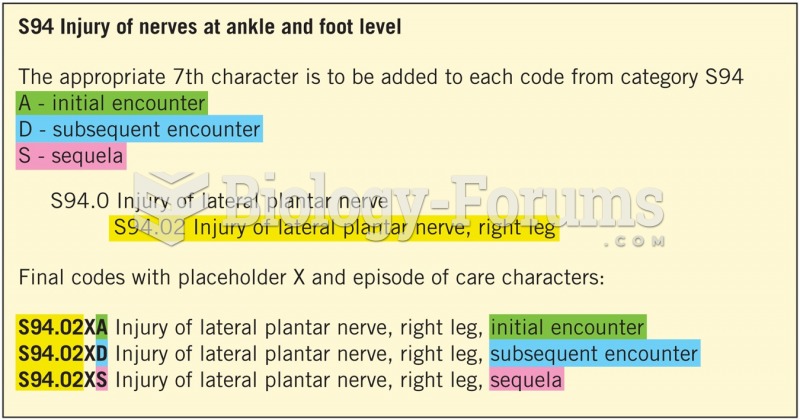Answer to Question 1
ANS: A
Some interventions originate from health care provider orders. These are dependent nursing interventions. The nurse incorporates these orders into the patient's overall care plan by associating each with the appropriate nursing diagnosis. The ability of nurses to enact independent interventions has expanded in recent years, allowing nurses to initiate care that they recognize as essential in meeting patient needs or preventing complications. Ordering heel protectors for patients susceptible to skin breakdown and initiating preventive measures (e.g., activity regimens, consultations with social workers, preadmission teaching) are often independent, nurse-initiated interventions. Collaborative interventions require cooperation among several health care professionals and unlicensed assistive personnel (UAP). Collaborative interventions include activities such as physical therapy, home health care, personal care, spiritual counseling, medication reconciliation, and palliative or hospice care. Assessment data are not considered interventions.
Answer to Question 2
ANS: B
Some interventions originate from health care provider orders. These are dependent nursing interventions. The nurse incorporates these orders into the patient's overall care plan by associating each with the appropriate nursing diagnosis. The ability of nurses to enact independent interventions has expanded in recent years, allowing nurses to initiate care that they recognize as essential in meeting patient needs or preventing complications. Ordering heel protectors for patients susceptible to skin breakdown and initiating preventive measures (e.g., activity regimens, consultations with social workers, preadmission teaching) are often independent, nurse-initiated interventions. Collaborative interventions require cooperation among several health care professionals and unlicensed assistive personnel (UAP). Collaborative interventions include activities such as physical therapy, home health care, personal care, spiritual counseling, medication reconciliation, and palliative or hospice care. One method of determining interventions to meet patient outcome goals is to use the Nursing Interventions Classification (NIC), a comprehensive, research-based, standardized collection of interventions and associated activities. NIC provides nurses with multidisciplinary interventions linked to each NANDA-I nursing diagnosis and a corresponding NOC.







